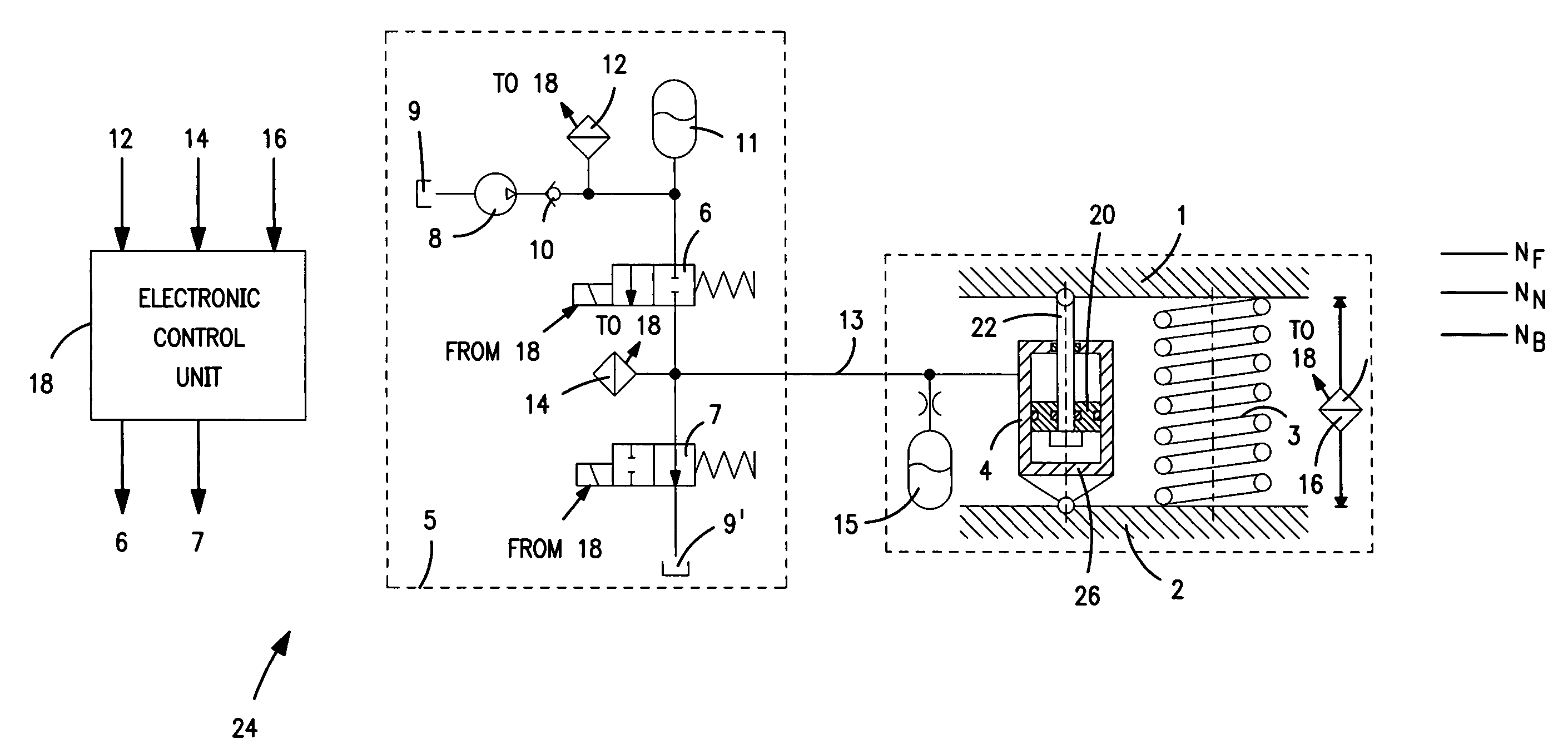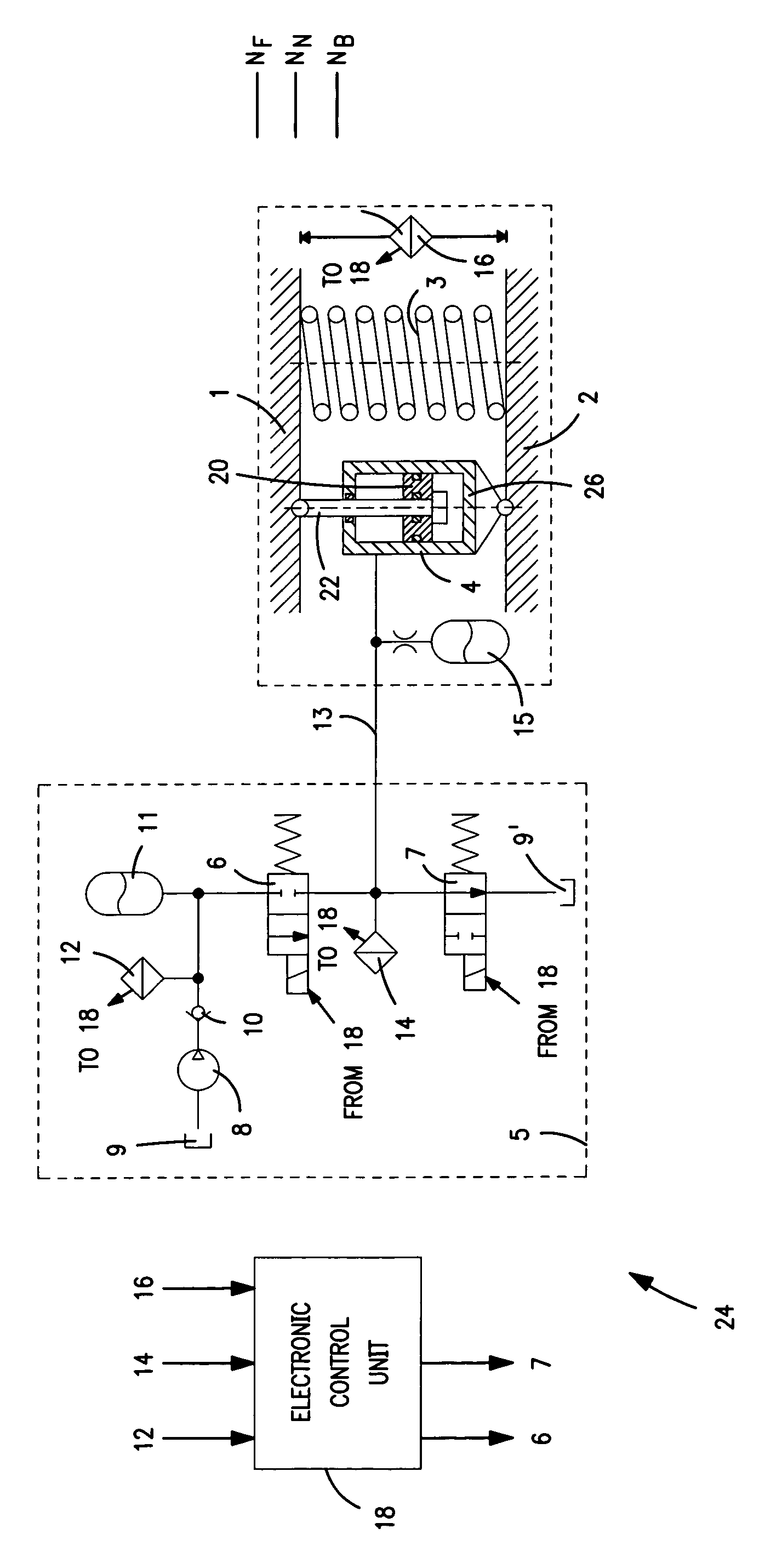System for the secondary suspension of a superstructure of a rail vehicle having a passive spring element
a superstructure and passive spring technology, applied in the direction of passenger carriages, carriages, and resilient suspensions, can solve the problems of lowering the superstructure, the superstructure level may change, and the emergency level n/sub>cannot be guaranteed under all conditions
- Summary
- Abstract
- Description
- Claims
- Application Information
AI Technical Summary
Benefits of technology
Problems solved by technology
Method used
Image
Examples
Embodiment Construction
[0022]According to the FIGURE, a steel spring 3 is arranged as a passive spring element, between an upper superstructure 1 of a rail vehicle (not shown in detail) and a lower bogie 2. During travel of the rail vehicle, the steel spring 3 ensures at least one traveling level, shown as a raised traveling level NF for the superstructure 1, so that the superstructure 1 remains unaffected by disturbing vibrations caused by the travel. The steel spring 3 simultaneously takes over the transverse suspension of the superstructure 1. A tension cylinder 4 is connected in parallel to the steel spring 3. To this extent, the tension cylinder 4 also acts between the upper superstructure 1 and the lower bogie 2 and is linked to both. The tension cylinder 4 is used for a compression of the adjacent steel spring 3, so that the superstructure 1 can be changed from its normal traveling level NF to a lowered station platform level NB. At this lower station platform level NB, door steps of entrance doors...
PUM
 Login to View More
Login to View More Abstract
Description
Claims
Application Information
 Login to View More
Login to View More - R&D
- Intellectual Property
- Life Sciences
- Materials
- Tech Scout
- Unparalleled Data Quality
- Higher Quality Content
- 60% Fewer Hallucinations
Browse by: Latest US Patents, China's latest patents, Technical Efficacy Thesaurus, Application Domain, Technology Topic, Popular Technical Reports.
© 2025 PatSnap. All rights reserved.Legal|Privacy policy|Modern Slavery Act Transparency Statement|Sitemap|About US| Contact US: help@patsnap.com


